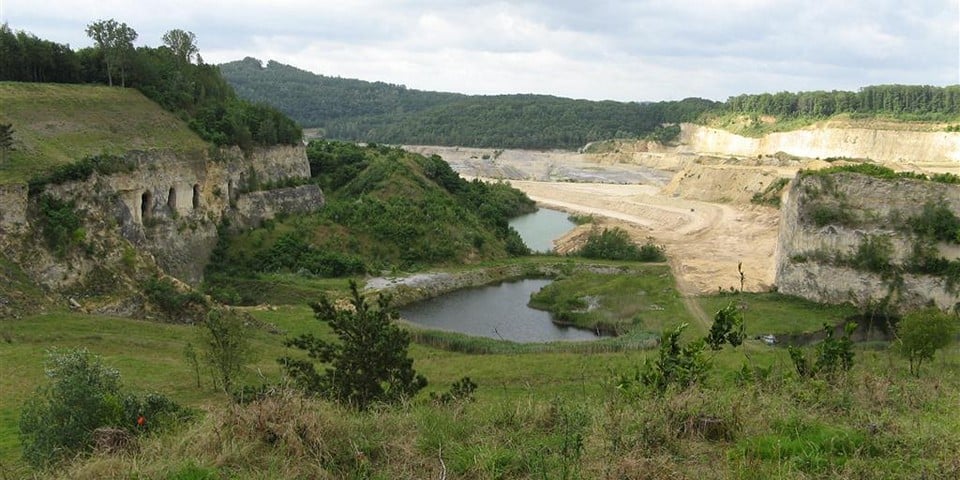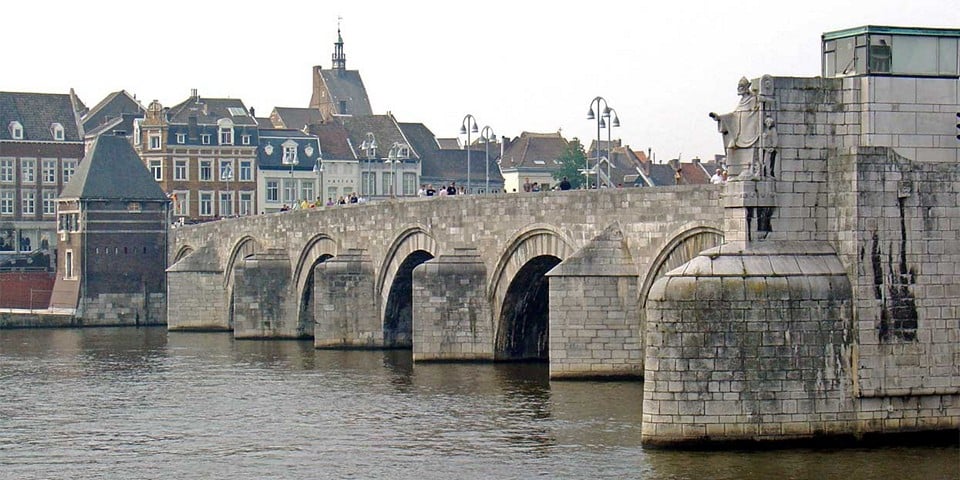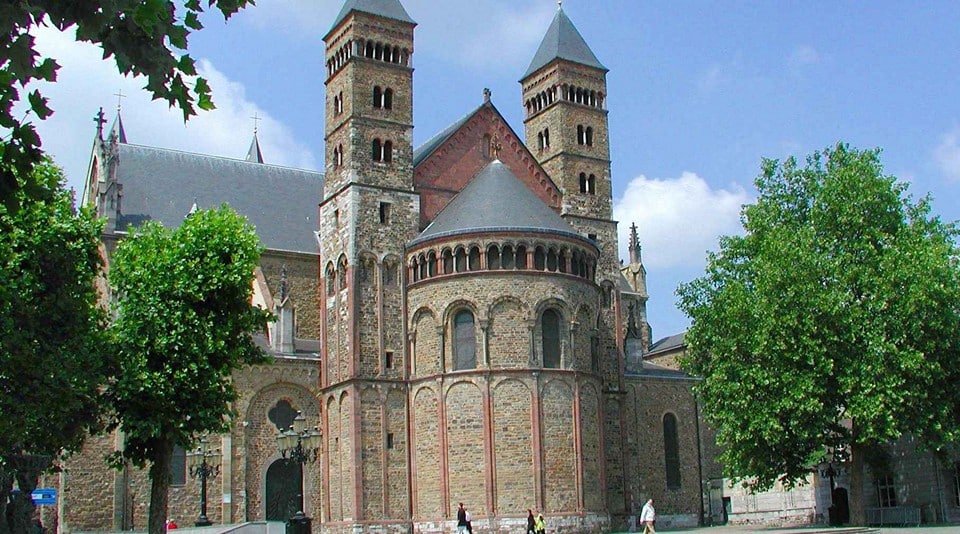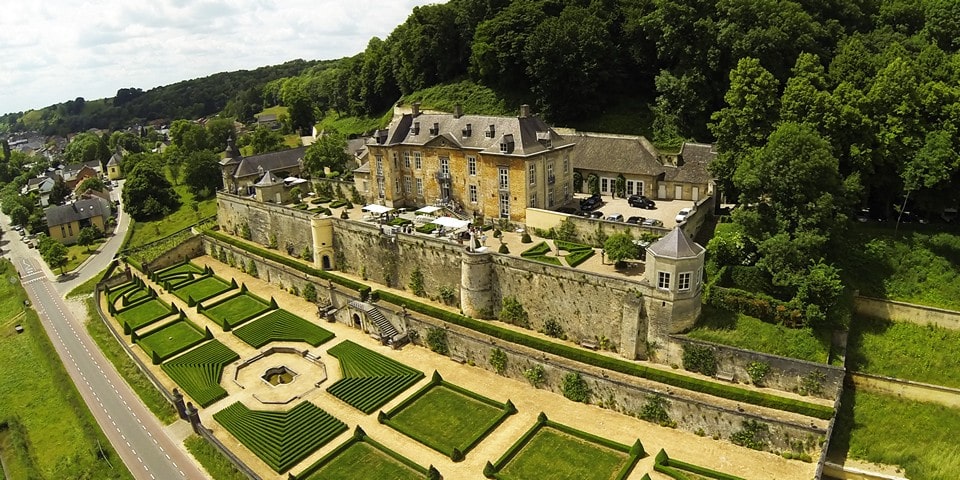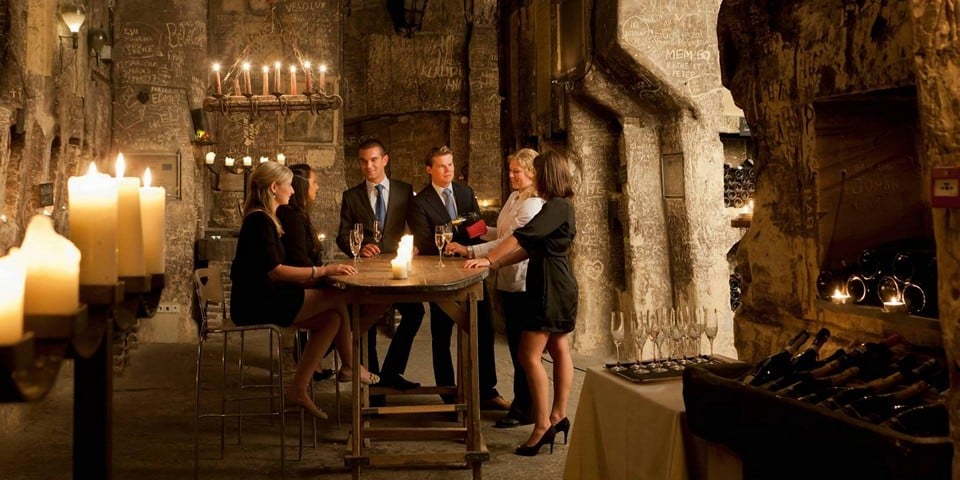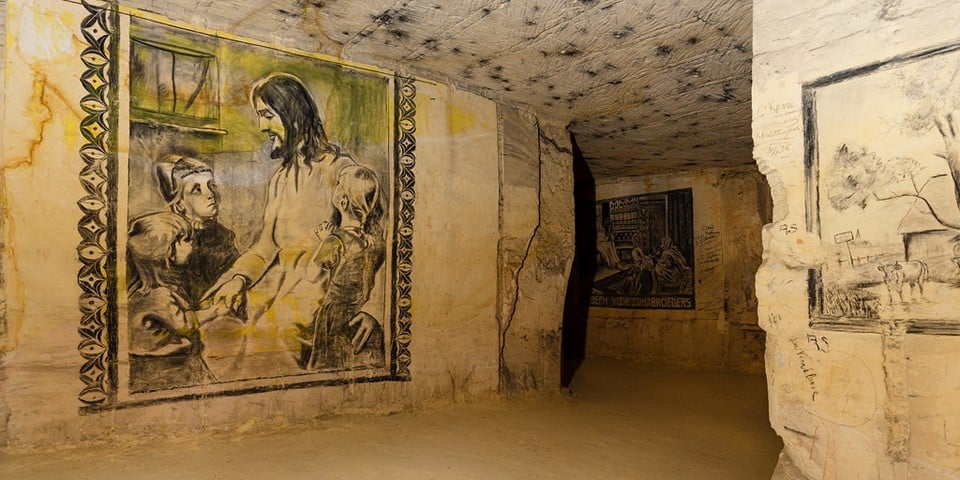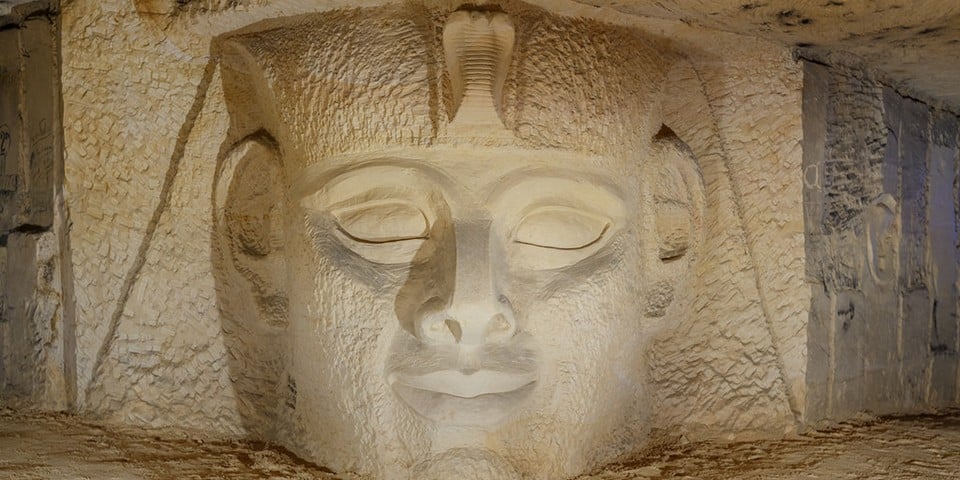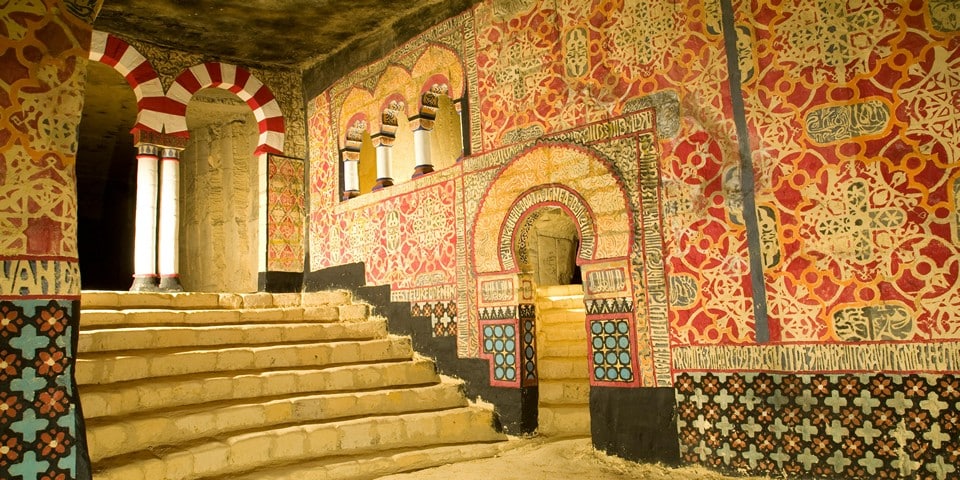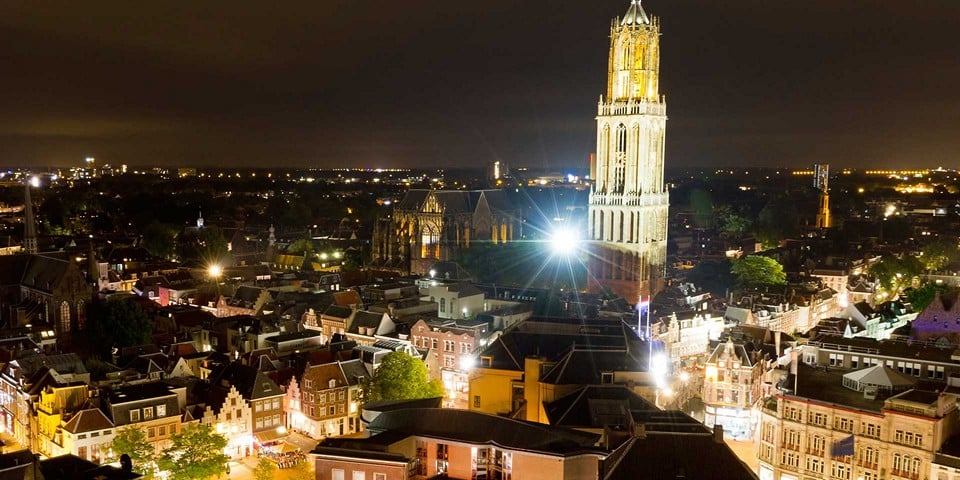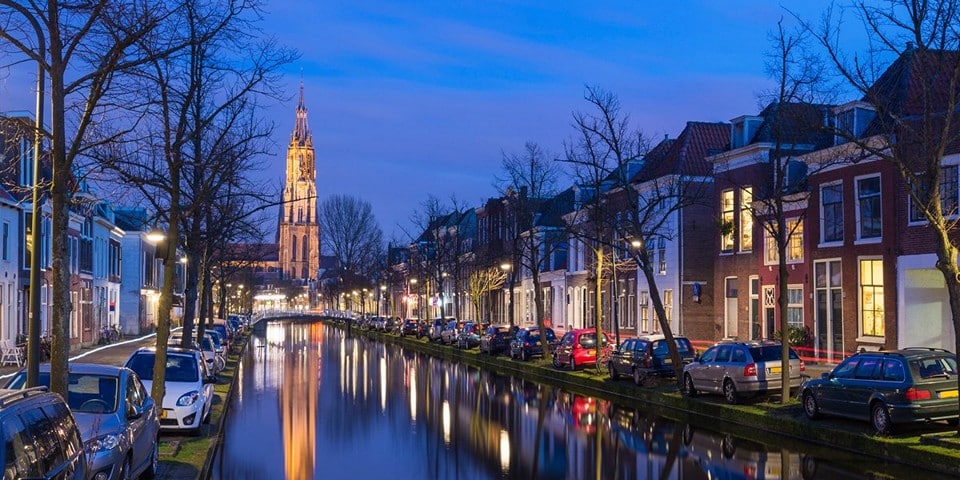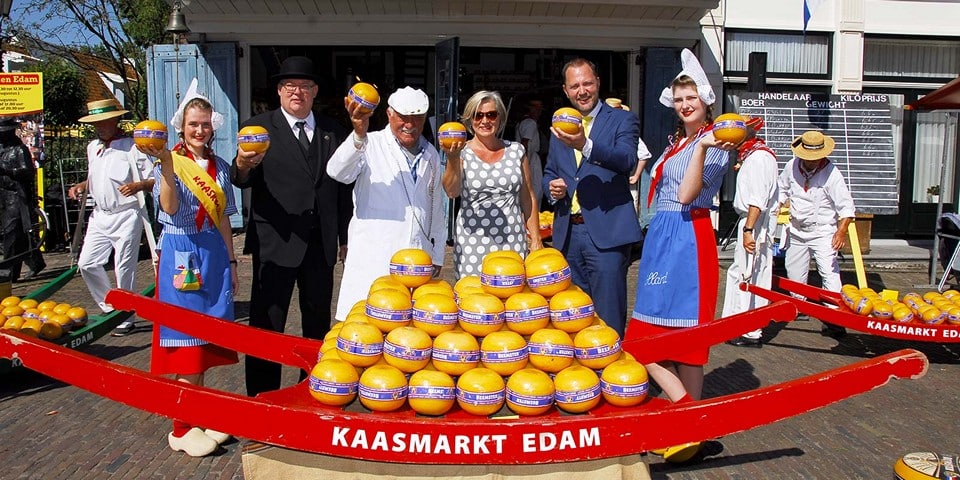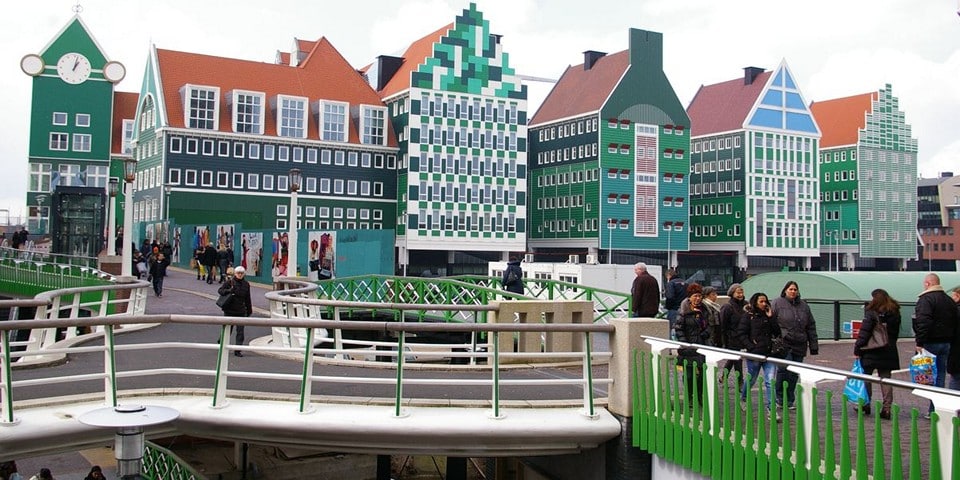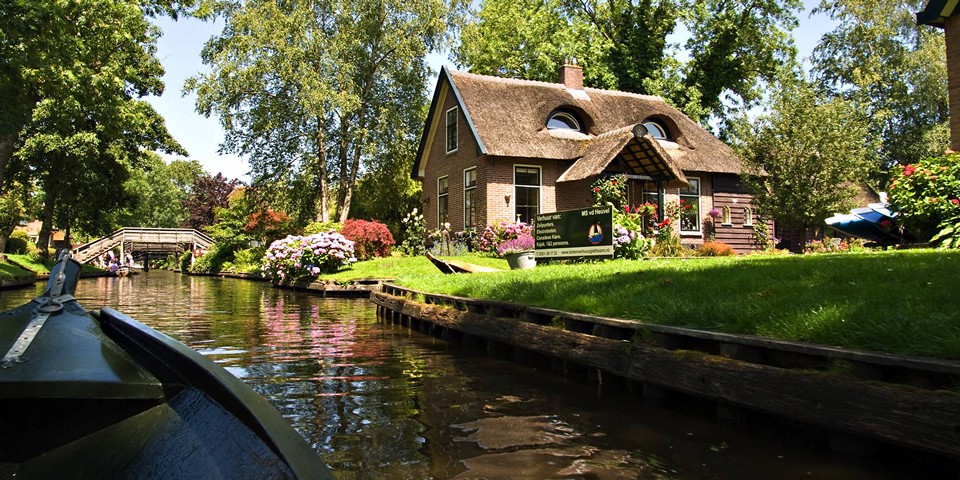Maastricht is a city near which d'Artagnan died during the siege of an impregnable fortress. He is also known for the fact that more than two decades ago, the authorities of European states signed an agreement on the formation of the EU in Maastricht. But the city founded in 500 BC became famous not only for these events. The sights of Maastricht are stone pavements, powerful medieval towers, fortresses, churches, cave labyrinths, beautiful hilly landscapes.
- I advise you to read: where to stay in Maastricht?
Geography
Maastricht is the administrative center of the community of the same name and the province of Limburg. The municipality is located in the south of the Netherlands on the border with Belgium and 25 km from Germany. From Amsterdam (Amsterdam), the capital of the Netherlands, the city separates 178 km in a straight line, 214 km - along the highway.
The area of Maastricht is 59 km2, and more than 120 thousand people live here. The municipality consists of five districts:
- Maastricht-Centrum - the historical center, where the main attractions of Maastricht are concentrated;
- The Southwest District (Stadsdeel Zuid-West) is a green area where rich people live. Two districts, Sint Pieter and Wolder, are located on the border with Belgium;
- Northwestern District (Stadsdeel Noord-West) - agricultural region, bordering Belgium, one of the most disadvantaged areas of Maastricht;
- The Northeastern District (Stadsdeel Noord-Oost) consists of ten districts. These are mainly industrial areas, it also includes several villages, two of which are on the border with Belgium (Borgharen and Itteren);
- Southeast District (Stadsdeel Zuid-Oost) is a developed business district of Maastricht, one of the districts of which, Heugem, borders Belgium.
On the southwest side of Maastricht is the hill of St. Petra (Sint-Pietersberg), whose height is 109 m. In the southeast there are several large lakes - Grindgat Oost-Maarland and Pietersplas to the north.
Unlike many Dutch cities, there are few canals in Maastricht, even though the Maas flows through it in the direction of the North Sea (Noordzee). From it in the city center in a northeast direction, parallel to the river, the navigable Julianakanaal departs, connecting Maastricht with other industrial cities for 36 km. You can also distinguish the Voedingskanaal and Afvoerkanaal departing from the Meuse, which flow into the Zuid-Willemsvaart. This channel is located west of the main river and runs parallel to it to the end of Maastricht. Zuid-Willemsvaart, like the other two canals, also starts from the Meuse, but not directly, but through a canal system.
History
People settled on the territory of Maastricht long before our era. Therefore, the history of the city can be divided into several stages: pre-antique, Roman periods, the Middle Ages, modern history. And throughout all these years life was raging here, trade was going on, military operations were waged, important agreements were concluded.
Early period
Archaeological excavations make it possible to say with confidence that people constantly lived on the lands of Maastricht for twenty centuries, and the first settlement appeared in 500 BC. NS. Some finds indicate the presence of people here in the Paleolithic era (250 thousand years ago). That is why many historians call Maastricht the oldest city in the Netherlands, although officially this name is Nijmegen, which, although it appeared in 19 BC. BC, received city rights much earlier - in 98 AD.
The Romans came to the lands of Maastricht in the middle of the 1st century. BC e., driving away the Celts who lived here. In 27 BC. NS. they built a bridge across the river that was part of the important Keulen-Tongeren road. This is how the name of the city appeared: Trajectum ad Mosam translated from Latin means "Way across the Meuse". The bridge had a very important strategic importance, therefore, to protect it, the Romans built a fortress, a temple, thermal baths and other buildings nearby.
In 270 AD the Roman settlement was destroyed by Germanic tribes. In 330 AD, the rulers of Maastricht built a fortified camp and a fort with 10 towers and two portals to protect the bridge. Also, a granary appeared, thermal baths were rebuilt.
In the IV Art. the Christian preacher Servatius settled in Maastricht, who converted the existing pagan temple into a Christian church dedicated to the Mother of God. Thus, Servatius became the first bishop of Maastricht, and after his death in 384 - the patron saint of the city. The settlement was the center of Christianity for a long time, until in 721 the episcopal see was transferred to Liege (Belgium).
Middle Ages
Maastricht is mentioned several times in many sources of the early Middle Ages. Thanks to the presence of a bishop, and possibly a royal palace, it was a large and prosperous city. In the IX century. Maastricht became part of the Duchy of Lower Lorraine (Neder-Lotharingen).
In the XI-XII centuries. Maastricht experienced a period of cultural flourishing thanks to the rivalry between the two church communities, which tried to outdo each other in building Christian churches. This led to the fact that jewelry, sculpture, painting reached an unprecedented level, and the poet Hendrik van Veldeke wrote “The Life of St. Servantia ”(Leven van Sint-Servaas), one of the oldest works of Dutch literature.
In 1204 Maastricht passed into the possession of the Duke of Brabant. This led to the fact that the city had two masters: the Duke and the Bishop of Liège, who took almost a century to sign the agreement on Joint Governance. It is not known when Maastricht received city rights, but in 1229 the Duke allowed to build a stone wall around the settlement, which confirmed the status of the city.
Maastricht was an important commercial, industrial and cultural center throughout the Middle Ages. Here they made textiles and leather goods, merchant ships went through the city, monasteries appeared. It was only after the abdication of Charles V of Habsburg that the decline began due to the division of the Dutch lands between the German and Spanish empires, which led to bloody wars.
Modern history
In the XVI-XVII centuries. Maastricht passed to Catholics, then to Protestants, because of which many Christian memorials were destroyed. It all ended after the Duke of Orange conquered the city in 1632, annexing Maastricht to the United Provinces (Republiek der Verenigde Nederlanden). At the same time, an agreement on freedom of religion was concluded between Catholics and Protestants.
In 1673, Maastricht was captured by the French. During the siege, Charles Ogier de Castelmore, Count d'Artagnan, the prototype of the hero of the famous trilogy by Alexandre Dumas, was mortally wounded. Until 1678 Maastricht was owned by the French, then he returned to the Netherlands after the conclusion of a peace treaty. After that, the French captured Maastricht twice more and owned it from 1848 to 1849. and from 1794 to 1814.
After the collapse of Napoleon, the lands of Limburg went to the Netherlands. But disagreements between the northern Protestant provinces and the southern Catholic provinces led to a Catholic uprising in 1830, which formed Belgium. After that, the status of Maastricht was uncertain for a long time, since both countries wanted to take the capital of Limburg. As a result, in 1834 a treaty appeared, where the western part of the region went to the Belgians, the eastern part, together with Maastricht, to the Netherlands. The borders between the two countries were finally fixed in 1843.
Maastricht was one of the first cities in the Netherlands to take a blow from Nazi Germany in May 1940. The Germans were aiming at bridges across the Meuse, which would allow them to quickly defeat the French positions. To slow down the advance of the Nazis, the defenders blew up the bridges. Interestingly, the occupation of the city lasted 4 years, 4 months and 4 days - and on September 14, 1944, Maastricht turned out to be the first city in the Netherlands to be liberated from the German invaders.
After World War II, the population of Maastricht increased dramatically, leading to the construction of huge areas west of the center. In 1974, the University of Limburg was opened in the city, now Universiteit Maastricht. In 1992 in Maastricht they signed the document establishing the European Union.
Attractions
Despite numerous hostilities, sieges, plundering, many medieval monuments have survived in Maastricht. There are 1,677 national monuments here, and therefore in terms of the number of attractions, the city is second only to Amsterdam. Among the protected structures of Maastricht are the oldest bridge in the Netherlands, the oldest city gate, two Romanesque temples and seven Gothic churches, fifteen castles and manors.
Bridge
One of the main attractions of Maastricht is St. Servatia (Sint Servaasbrug). It is the oldest bridge in the Netherlands, built at the end of the 13th century. after the structure built by the Romans collapsed during the procession, causing the death of 400 people.
The new structure was made of limestone, and at first the structure had 9 arches and a wooden section that could be removed at any time during a siege. But in the middle of the 17th century. due to the change in the course of the Meuse, one arch found itself on the shore, so it was rebuilt, making it part of the embankment.
At first, the Maastricht Bridge belonged to the Order of St. Servatius, by whose order it was built, but in the 17th century. passed into the ownership of the city, since the church did not have enough money to repair it. As a result, the structure, which by this time began to collapse, was overhauled. After the restoration, the bridge was maintained in good condition, but numerous floods and ice drifts constantly destroyed it.
The next major reconstruction took place in the 19th century. Sidewalks were widened, tram rails were laid. In the XX century. it became obvious that the construction did not meet the requirements of the time, since the load on the bridge increased significantly. To solve the problem, the authorities proposed to demolish the landmark, but under pressure from the public they decided to leave it, and a new bridge should be built nearby, more in line with the requirements of the era.
https://youtu.be/rHI2BNLz8M4
St. Servatia suffered severe damage during World War II: part of it was blown up by order of the Dutch command. It took the Germans three months to restore it. When the Nazis retreated, the bridge suffered much more, but at the hands of the Germans. True, thanks to the reconstruction carried out shortly before the war, I was able to resist.
Although traffic on the bridge was quickly restored, a thorough reconstruction was needed, which was carried out in 1948, expanding the landmark by 2 m. True, the towers that were located at the edges of the sliding part of the bridge were not restored.
The last works took place in 2007, when the arches were reinforced with concrete.
At the moment, the length of the structure is 160 m, width - 9 m. The structure has 7 arches, a lifting part, in the center there is a monument to St. Servantia. Cars do not drive across the bridge - it is only for pedestrians and cyclists.
- Address: Sint Servaosbrögk. From the east bank entrance from Wycker Brugstraat 62, from the west - Maastrichter Brugstraat, 1;
- Free admission.
Basilica of St. Servantia
The oldest church in Maastricht is the Basilica of St. Servatia (Sint-Servaasbasiliek). The building that has survived to this day is the fourth building in a row. The first wooden chapel was built over the grave of St. Servatius at the end of the 4th century. immediately after his death. Two hundred years later, it was replaced by a stone temple with a crypt. Due to the large influx of pilgrims, it soon became obvious that it was necessary to expand - and in the VIII century. a new church appeared, which was badly damaged a hundred years later during a Viking raid.
In 1000, the old temple was razed to the ground, and a new one began to be erected, which has survived to this day. It took four decades to build, and the basilica was inaugurated in 1039. But already in the second half of the 11th century. a number of changes were made to the temple, after which the landmark was rebuilt and transformed several times, depending on the architectural style, which was popular during the restoration.
The basilica is very different from traditional Dutch churches. It is decorated with sculptures and icons. At the entrance there is a fountain with St. Servate with key and staff. It also houses a rich collection of church items, including a gilded bust, a bishop's staff, a seal, and a golden reliquary created in the 12th century. for the relics of St. Servatia. The largest bell in the Netherlands can also be seen here.
Church of St. Servatia is a functioning church, in the morning a liturgy is held here... Monday to Saturday at 9 am, Sunday at 10 and 11.30 am.
- Address: Keizer Karelplein, 3;
- Web site: www.sintservaas.nl;
- Opening hours of the Treasury: from 10 to 17, on Sunday - from 12.30, in July and August it is open until 18.00. Half an hour before closing time, tickets are not sold and they are not allowed to enter the Treasury, but visitors can stay in the church. On New Years, Easter, Christmas the museum is closed;
- Entrance fee to the Basilica and the Treasury: adults - 4.5 €, students and seniors - 3 €, up to 18 years old accompanied by parents free of charge.
Nerkanne Castle
Château Neercanne or Kasteel Neercanne is the only castle in the country located on an artificial hill terrace.
It was built on the site of the Roman fortifications, from which there are caves that are now used as a wine cellar. In the XIV century. here appeared the castle of Agimont, which survived many sieges. In 1698, the fort passed into the possession of Baron van Dopff, who ordered the demolition of the old castle and the construction of a summer mansion in the style of Dutch classicism. In 1717, the Russian Tsar Peter I visited Nerkanne Castle.
During the Cold War, this was the headquarters of NATO. In December 1991, the Queen of the Netherlands arranged a meeting at the castle for the heads of state of the European Economic Community, who, during the reception, discussed important details related to the creation of the European Union. The treaty itself was signed a year later in the building of the Maastricht administration.
Now inside the castle there is a French restaurant Château Neercanne, which was highly appreciated by visitors. During good times of the year, clients can settle down on the terrace, which offers a magnificent view of the gardens, decorated in French style of the 17th century.
- Address: Cannerweg, 800;
- Web site: www.limburgs-landschap.nl.
Jesuit caves
In the south of Maastricht, not far from Château Neercanne, there are man-made Jesuit caves Jezuïetenberg, which were formed during the extraction of limestone in the 17th-18th centuries. There are 20 thousand corridors with a total length of 320 km.
The cave became a local attraction after the Jesuits settled here in 1860, who over the next hundred years created here a huge number of reliefs, frescoes, wall drawings. However, not all of them relate to Christian themes - here you can see Hindu temples, winged bulls, busts of Egyptian pharaohs and even Snow White with the dwarfs. One of the reasons for the appearance of such drawings is that many Jesuits preached in the countries of Asia and Africa, and often invited non-Christian students here to stay in Maastricht.
During the Second World War, it was in these caves that various works of art were hidden from the Germans, incl. - paintings by Rembrandt. And although the Nazis drove the Jesuits out of here, occupying the caves, they did not find the hidden masterpieces.
After the war, the Jesuits returned, but soon they were evicted due to the fact that NATO established its headquarters in the local lands. The order left the caves completely in 1968, after which the Jezuïetenberg Foundation was responsible for the preservation of the catacombs.
- Address: Cannerweg 68;
- Web site: jezuietenberg.eu;
- Non-working days: Sunday, Easter, Christmas, summer holidays (more details on the website);
- Visiting hours: from 9 to 20, Saturday from 10 to 12 and 14 to 16;
- Entrance fee: 7 €, only groups of 10 people or more are admitted, by appointment. On the first Saturday of the month, the cave can be visited at 14.00 individually, without a group. If desired, a group of 10 to 60 people. can rent a refectory for lunch.
How to get from Amsterdam
The distance from Amsterdam to Maastricht is 214 km on the highway. It is convenient to get here by train or car. In this case, the journey will take 2.5 hours. It is much longer and more expensive to travel by bus.
By train
From Amsterdam to Maastricht, trains leave every half hour from the stations Amsterdam-Zuid, Amsterdam Centraal Trains, Schiphol Airport. When departing from the southern station and from the airport, the journey takes 2 hours 40 minutes, from the central station - 2 hours 24 minutes. For a ticket in the second class you have to pay 25.5 €, in the first - 43.4 €. More details about the schedule and prices can be found on the website http://www.ns.nl/en
By bus
There are 3 to 7 buses departing daily from Amsterdam Sloterdijk Station to Maastricht. The flight will cost more than the train: you have to pay for a ticket from 25-37 €, depending on the day of the week and time of departure. The road to Maastricht will take 6 to 8 hours. More details about prices, route and schedule can be found here: www.flixbus.ru.
By car
The trip by car from Amsterdam to Maastricht takes 2 hours 40 minutes, the length of the road is 214 km. The most convenient way is to go along the A10 (Amsterdam-Oost) motorway, for which you first need to drive along Oudezijds Voorburgwal, Weesperstraat and s112. Then follow the A2 towards Maastricht. On reaching the N2, take exit 53, then follow Viaductweg, Noorderbrug and Boschstraat towards Markt Square in the center of Maastricht.
Why come here
Medieval walls and bastions, castles, temples, museums, ancient secular buildings - the sights of Maastricht should be seen by everyone who wants to know how the city lives, which is more than 20 thousand years old, and where the European Union was born.

